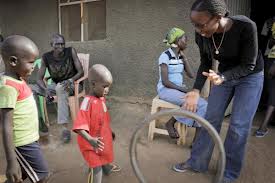
Reports on the increase in child abuse and violation of children’s rights across the country were a cause for concern in 2013.
Sunday View with Tonderayi Matonho
As we start 2014, policy makers and the child rights sector need to up the tempo in defending the children’s rights through effective protection and safety measures. The overall socio-economic and political situation in the country has also been a contributing factor to the abuse and violence against children.
To some extent, it is commendable that the child rights sector has largely responded to the high rates of child abuse in Zimbabwe in 2012 and 2013 through conducting child rights advocacy and education training workshops in urban, peri-urban and rural communities.
This was also aimed to complement efforts by partners involved in psycho-social support, mitigation and support initiatives. Yet, to what extent have these initiatives helped in reducing the rates of child abuse and violence against children?
Emerging factors out of these workshops is that most children are vulnerable due to unstable households and also a very low understanding of their rights. Hence, the shocking figures of abuse. Perpetrators, consciously or unconsciously, are capitalising on the lack of information on rights at household level.
According to the Baseline Survey on Life Experiences of Adolescents in 2013, figures at hand indicate that as many as 124 girls were sexually abused within 12 days alone in the month of October 2012. About 9% of girls aged between 13 and 17 in the country and 2% of boys in the same age group were sexually abused during the period under review. This points to a decline in societal moral standards, which has exposed children to various forms of abuse.
Zimbabwe’s laws on children are meant to protect the safety and welfare of the child in every household. Apparently, at national level, Zimbabwe has progressive child-protection instruments, the main one being the Children’s Protection and Adoption Act (Children’s Act). Other subsidiary instruments, including the National Plan of Action (2005) and the Orphan Care Policy (1999), promote the overall protection of the rights of the child.
- Sexual abuse: What parents can do to keep kids safe
- Sweden pledges US$6m to fight child abuse
- Protecting our children and youths: The case for a national positive parenting strategy in Zim
- Child protection crisis endures: Unicef
Keep Reading
The new constitution of Zimbabwe provides and guarantees an expanded bill of rights to children (0-18 years) and youths (15-18 years) (Chapters 2:19, 20, 25 and 27)) and recognises the existence and role of child-centred NGOs and networks through memorandums of understanding with parent ministries of the Government of Zimbabwe.
However, the crises that have enveloped Zimbabwe over the past few years have compromised the extent to which children can enjoy basic rights.
Vulnerability, marginalisation, protection, safety and sensitivity are all common terms and concepts around child rights advocacy and education. It is critical to understand that such technical and narrative discourse is associated with different local traditions and formal indices that require clear definitions and better understanding.
Underlying concepts and definitions promoted by international conventions such as the United Nations Convention on the Rights of the Child and the African Charter on the Rights and Welfare of the Child need to be constantly reviewed and monitored by actors in the child rights sector.
Policy makers, local child networks, international agencies, civil society movement and experts need to recognise the need for a collective process and a secured ownership. Vulnerability and capability bridges between the poorest, moderate and wealthiest communities and all need to understand the issues and contribute to the process.











